When assembling electrical circuits wires need to be connected. An electrical contact is created at the connection point, which has a certain electrical resistance.
The task of any installer is to ensure a strong bonding of wiring with a minimum contact resistance and reliable electrical insulation.
For these purposes are used:
- twists;
- twists with welding;
- soldering;
- screw connections;
- assemblies on terminal blocks and screw blocks;
- self-clamping express terminals from WAGO or REXANT;
- insulating caps for twisting.
In this article, we will talk about how to connect wires using caps.
Usually, two main methods are used for high-quality connection of two wires: twisting followed by soldering and ordinary twisting (without soldering).
But it is worth noting that despite the advantages of traditional methods, they are also endowed with some disadvantages: soldering, being a high-quality connection during disassembly, requires complete removal (“biting off” the soldered part of the wires), which is not always possible due to the stock of the wire, twisting increases the chance of oxidation and does not give a guarantee reliable connection.
To date, there is another solution to such problems - these are connecting.
PPE caps for twisting wires
PPE caps- these are connecting insulating clips, which are made of non-combustible plastic compound. Inside these caps is a conical metal spring.
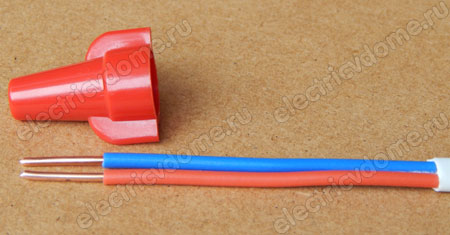
When they are twisted with little effort, the spring expands and compresses the wires, and the plastic sheath provides reliable electrical insulation, as well as mechanical and fire protection.
PPE caps are conical parts with metal bushings, inside of which there is a thread. By inserting two wires into this part and turning it a couple of times, the wires will be securely connected. If necessary, this connection can be disassembled without the slightest problem.
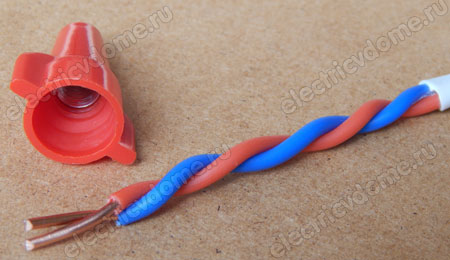
Connecting caps are produced different sizes for wires from 0.5 to 1.6 mm in diameter.
As a rule, the color of the cap corresponds to a certain diameter and size of the connected wires for which it is intended. Thanks to the use of connecting caps, a reliable connection of wires is achieved without the use of additional tools.
PPE caps characterized by the cross section of the total twisted wires. This section is expressed by the PPE number from 1 to 5. This figure characterizes the section and the number of strands twisted.
| brand | Quantity and section of cores, mm² | Color |
| PPE-1 | 2×1.5 | grey |
| PPE-2 | 3×1.5 | blue |
| PPE-3 | 2×2.5 | Orange |
| PPE-4 | 4×2.5 | yellow |
| PPE-5 | 8×2.5 | red |
Accordingly, the larger the number of the PPE cap, the larger the cross section and the number of wires it is intended for.
All wire connections assembled on self-clamping terminals or insulating caps are highly efficient and gaining popularity.
Express terminals allow you to quickly create reliable connection, but have a more complex design, somewhat more expensive. They are more often used to connect conductors to new measurement, automation and protection devices operating on microprocessor circuits.
For everyday frequent use, they are better suited with a simple device. The connection of the conductors is achieved by screwing their metal ends into a strong spring, made in the form of a cone-shaped spiral.
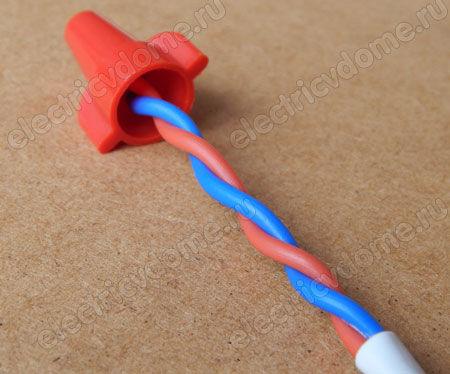
It is not required to isolate the junction, the spiral is placed in an insulated cap. The material of its body does not support combustion, is resistant to aggressive environments, and provides good electrical insulating properties.
Twisting PPE wires
Installing the cap on the prepared wires is quick and does not require special tools. The created connection is compact. Caps are convenient to use. However, you need to know the rules for their application, develop the necessary skills. Inept handling can lead to sad consequences.
Insulating caps are suitable for connecting several wires of a certain diameter, which is indicated in the documentation. Manufacturers from different countries use their notation. Therefore, it is better to be guided by the overall dimensions for connecting the wires, and not by the manufacturer's markings.
Use of PPE caps - practical application
Special care must be taken when handling aluminum conductors. Soft metal is easily deformed, quickly loses strength.
At cap twisting aluminum is reliably crimped by a conical spring and works well for a long time. Due to the occurrence of electrochemical processes, cannot be twisted together aluminum wires with copper.
It is important to remove the optimal length of the insulating layer from the conductor to ensure maximum metal-to-metal contact. It's easy to define. It is enough to insert one wire inside the cap and visually mark the place of the insulation cut. Remove the insulation and repeat the control installation of the wire. Bare metal must not extend beyond the insulating part of the cap.
When removing insulation, use different ways. Many older fitters work with a fitter's knife with an insulated handle and a short, sharp blade made of strong steel. Often used wedge or razor sharpening, which removes insulation well, but in inexperienced hands can cause harm.
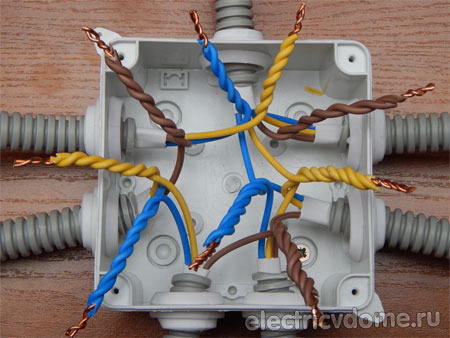
With a knife, especially when it is perpendicular to the conductor, it is possible to break the outer surface of the metal. Any, even an inconspicuous scratch, when twisting, will increase in size, reduce the cross section of the conductor, and reduce its electrical characteristics. The metal will begin to warm up and burn out, especially under heavy loads. A deep cut in the conductor will cause the wire to break when twisted.
It is necessary to remove the insulation with a knife when its blade is located at an obtuse angle to the conductor relative to the direction of the cut with light movements without damaging the metal.
A certain part of electricians use pliers or wire cutters to remove insulation, deform the metal at the conductor crimp, which is not acceptable. You can qualitatively remove the insulation with special pliers produced for such work.
The method of twisting the wires with pliers and then putting on the cap does not provide reliable contact and its isolation. Caps just fall out over time. But some installers don't get it.
Taking advantage insulating caps, force must be applied when twisting. It will ensure tight contact between the metals of the conductors and the spring.

To assess the effectiveness of the use of caps before their mass use, it is required to connect the wires with them and pass the load device through it with a current of a nominal value for about half an hour. Analyze connection heating. Then exceed the current and identify problem areas.
These electrical tests help professionals recognize weak spots created by them electrical circuits improve your skills and do quality work.
Related content on the site:
From the point of view of current regulations, wire strands can be roughly divided into two types:
- correct
- not correct
The correct ones include those twists that are somehow fixed. The following can act as a fixer:
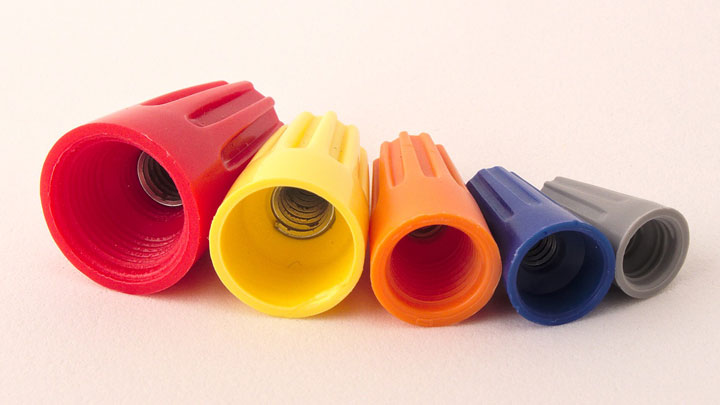
Wires that are simply twisted without fixation are considered not the correct connection element. At the same time, it doesn’t matter how many turns you have turned, how beautifully you connected the cores - all this is outside the rules and is prohibited. 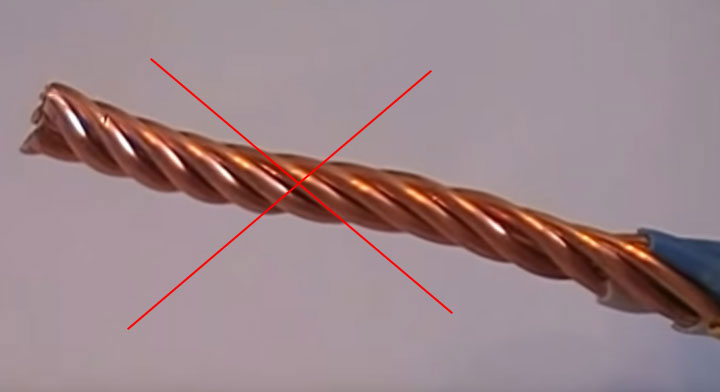
Soldered and welded cores are considered the best connection, but for most they are simply not suitable, due to the banal lack necessary tools or skills. 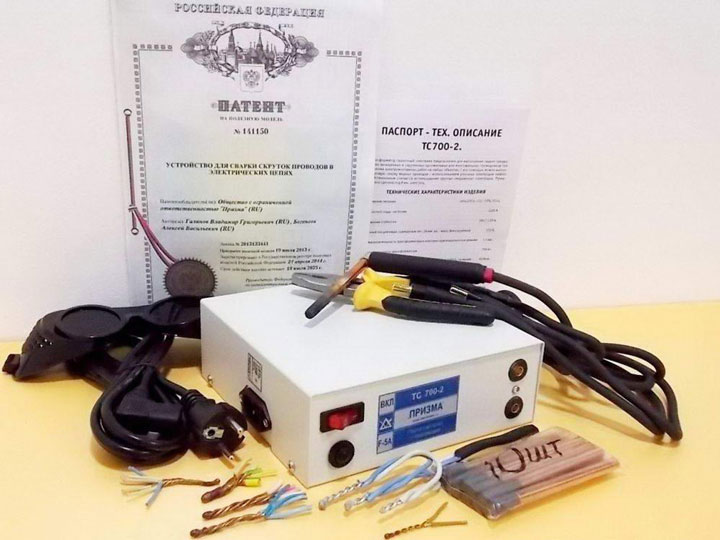
If you yourself decide to repair the wiring, assemble the junction box and at the same time save on installation, without violating the current rules, then PPE caps are ideal.
First, you do not need to buy any special tools. For example expensive welders or press tongs. 
PPE caps - 8 types
PPE - stands for connecting insulating clamp. This type of caps came to us from the West. In America, it is this connection and the method of insulating wires that is considered the most common.
Moreover, the choice of foreign consumers is much richer than ours.
Our manufacturers actually produce only two types of PPE:
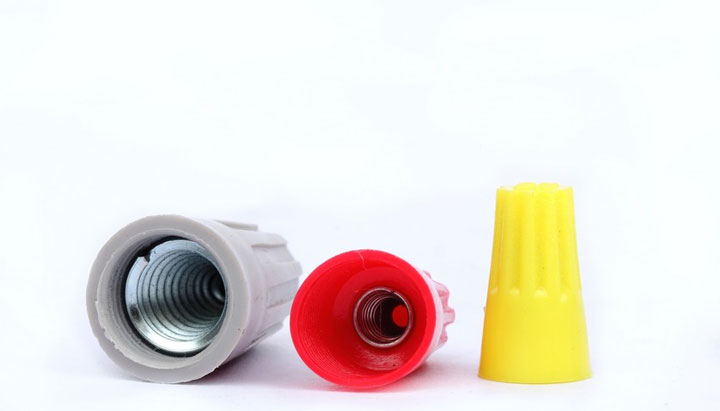
In the West, as they say, you can pick up for all occasions. It is not clear why the Chinese have not yet made a fuss and have not begun to produce the same thing for our market.
Here are the main 8 types of PPE caps that you can find there (taken from here).
This is the classic and reinforced (with wings) PPE that we are all familiar with: 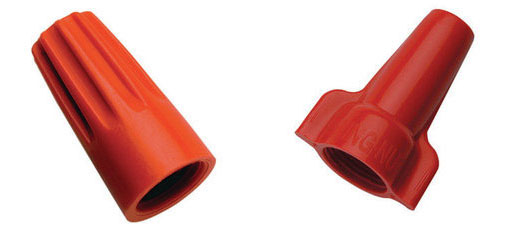
PPE with an improved cap shape that provides more comfortable work when twisting: 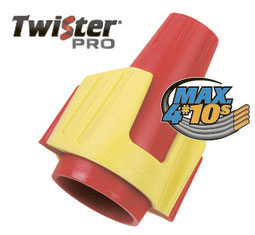
PPE cap with low profile design for working in confined spaces or small junction boxes: 
Low profile design with winglets for increased torque: 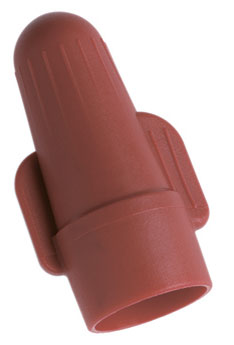
The next cap is a very controversial decision in my opinion, but it is also released. PPE for connecting aluminum conductors with copper. The cap is filled with a special antioxidant that prevents oxidation: 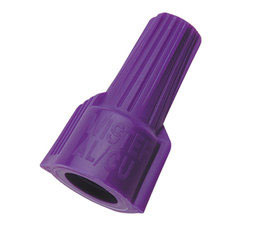
Moisture-proof clamps that can be installed on wires in electrical cabinets on the facade of the house, or wet rooms, and even directly in the ground in the garden: 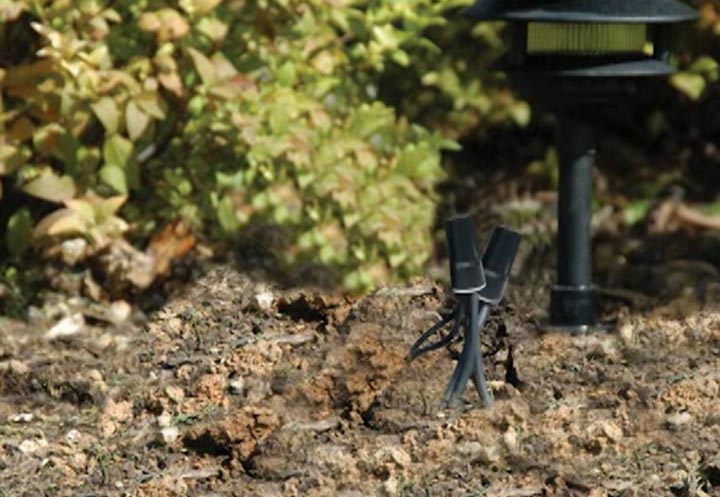
They contain 100% silicone sealant that protects against moisture and corrosion. 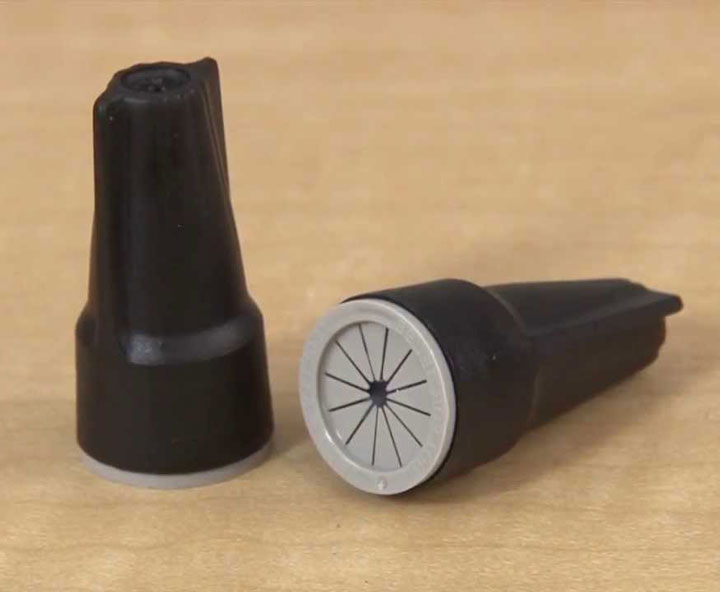
There is no need for heat shrinkage or hermetic insulation of the joints. 
PPE with a hole in the top of the cap. 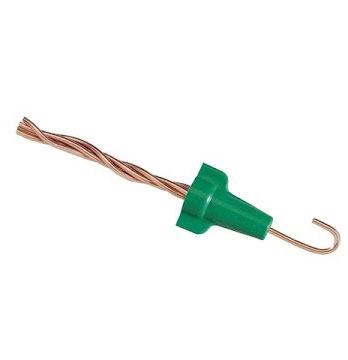
This is not a defect at all, as it might seem at first glance, but a clamp specially designed for twisting grounding conductors. One of them is just brought out through the hole and connected to the body of the shield or equipment. 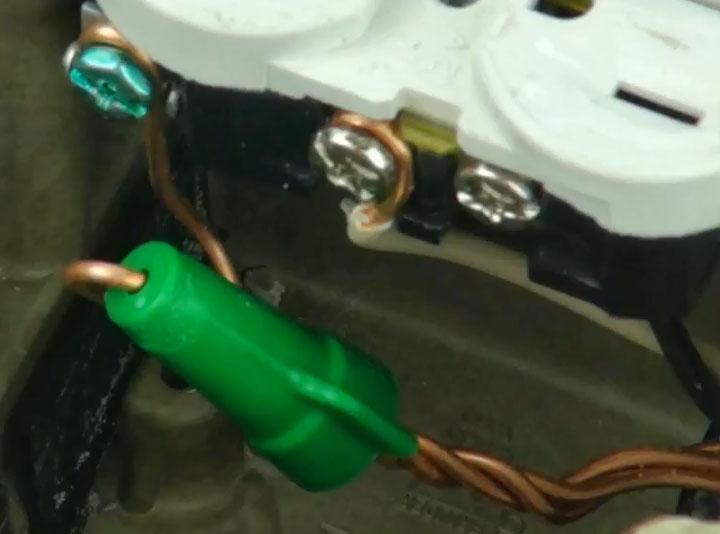
There are also similar clamps, where the wire is pressed not with a spring, but with a screw connection. 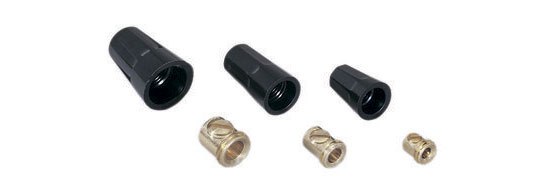
There is also a device - a connector filled with silicone. 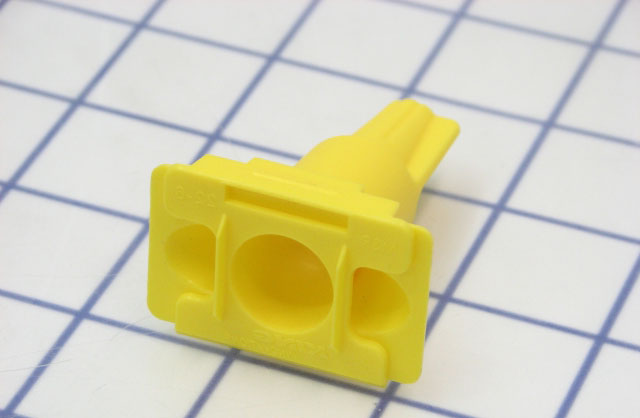 Any PPE cap with wires is placed inside it.
Any PPE cap with wires is placed inside it. 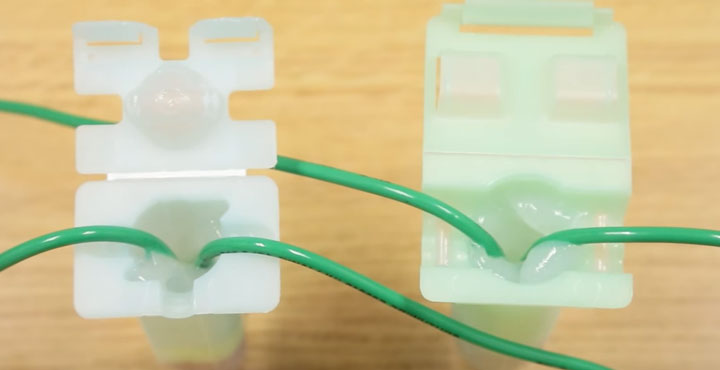
After that, this twist can be safely considered waterproof and placed underground - in the garden, near the waterers, when entering the house, etc. 
Sizes and selection of PPE caps
Domestic and Chinese manufacturers produce PPE caps in 5 sizes from PPE-1 to PPE-5. The largest of them is designed for a total cross-section of wires up to 32mm2.
By the way, be more careful when choosing caps based on the sections. Some Chinese PPE can put you in a stupor. On the cap itself, it can be written that it is designed for up to 20mm2. 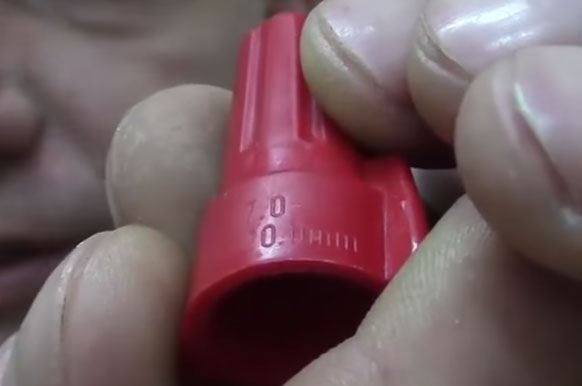
And on the package from it - only up to 15mm2. What to believe is not clear. 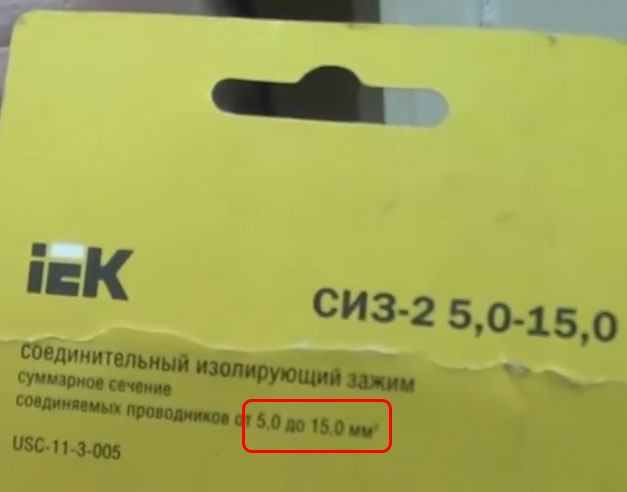
Quality can be checked even by touch. Low-quality PPE is characterized by poor plastic, which can burst during use. You can tell it apart by simply squeezing it with your fingers. 
More expensive and normal clamps, with difficulty, but are compressed under the force of two fingers. Low-quality options are coarser, and it is much more difficult to compress them.
Some, when twisting PPE, help themselves with pliers. Again, with cheap Chinese caps, with such work, a break may occur, or the spring may simply fall out. 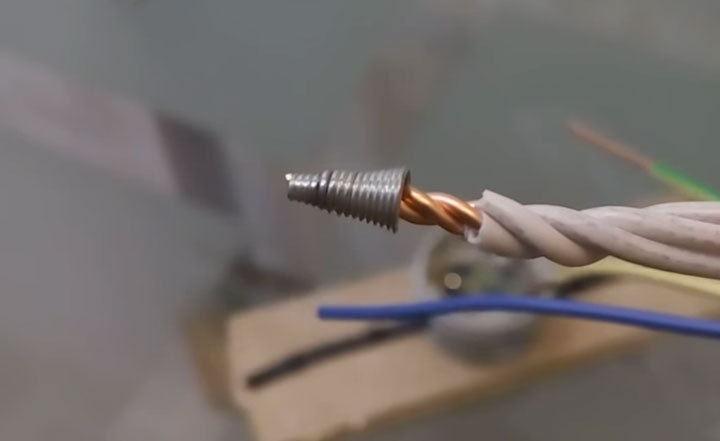
A good PPE clip can easily withstand the operating temperature range from -40 to +105 degrees.
Here are the markings and types of PPE caps with all the characteristics that the domestic manufacturer KBT produces: 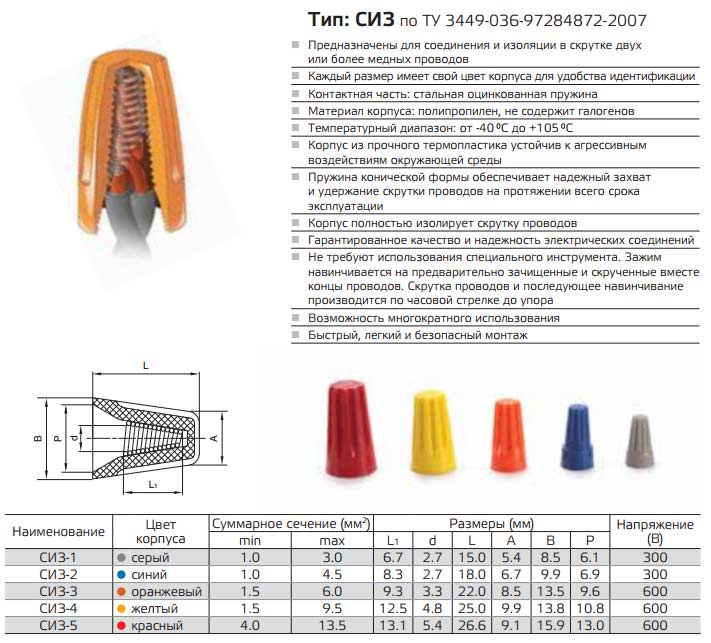
The company also produces a reinforced version of the cap with ears or wings: 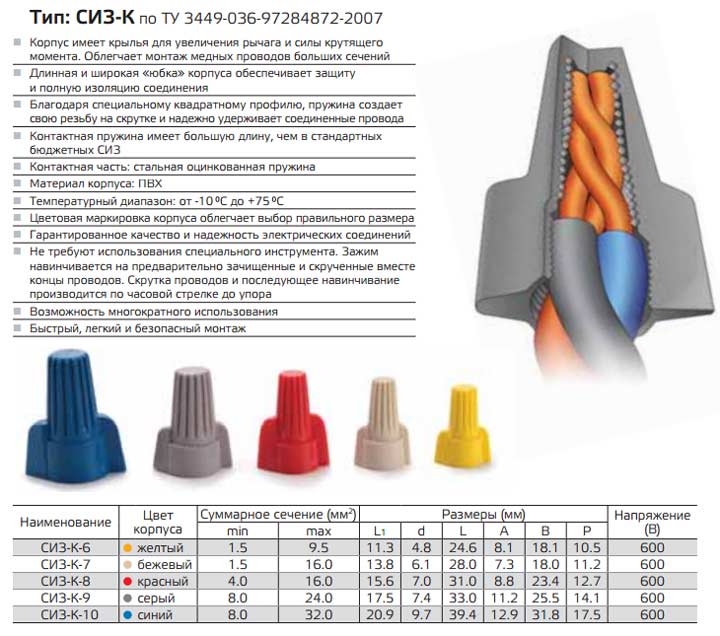
Caps with ears are, of course, much more convenient than simple ones, but here you need to proceed from the conditions of free space in the switch box. Since such ears can occupy up to 20% of the total area of the cap.
More PPE, as well as sleeve and fork tips can be distinguished by color. Each color corresponds to a specific wire section.
With the help of PPE, it is possible to connect 4,5,6 wires, the main thing is that the total cross-section of the twist corresponds to the calculated purpose of the PPE.
In this case, you can safely twist wires of different sections. When crimping wires with sleeves, this causes real problems and difficulties.
You can pick up and order sets of PPE caps for yourself.
How to properly twist PPE caps
Consider the process of twisting when using PPE. First of all, you need to accurately select the desired clamp according to the cross section of the wires. The quality of the connection will depend on this.
To do this, add up the total cross section of the conductors that will be twisted inside the cap.
Let's say it's 3 wires of 1.5mm2. This means that the total cross section of the twist is 4.5 mm2. Find the desired cap in the table. 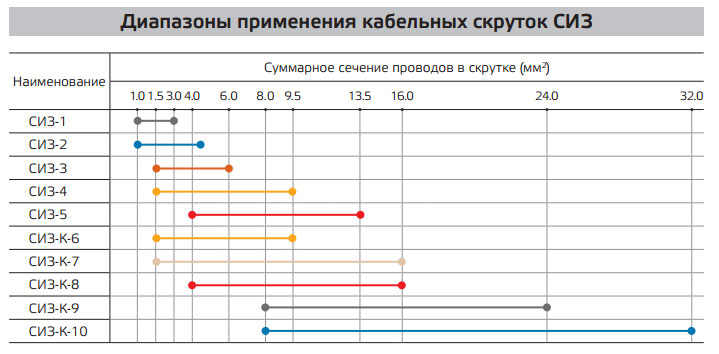
In this case, it is not necessary to focus on extreme values so that the twist is not, which is called end-to-end. In this case, the clamp simply will not work, or it will work poorly, and the wires will heat up.
For our version of 4.5mm2, it is better to choose PPE-3, designed for twisting from 1.5 to 6mm2. PPE-2 in this case will not be the best choice.
1 way to twist PPE
First, combine the wires. There is no need to pre-twist or lay them on top of each other. Put them in a PPE cap. 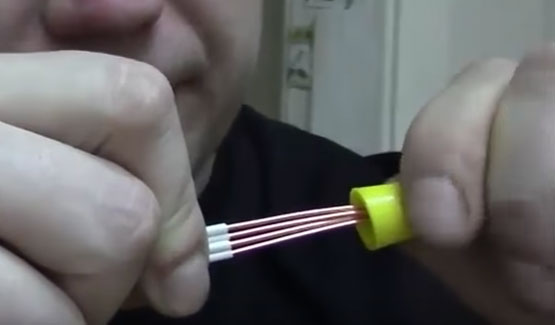
After that, you begin to press inside the PPE, and turn the cap itself clockwise until the spring works. As soon as the spring has captured the cores, you can begin the process of twisting the wires.
If there is not enough hand effort, and the cap is without “ears”, you can use pliers or even a screwdriver. The process will speed up at times.
There is even a specially designed screwdriver attachment for quickly twisting wires with PPE. With this method, the cap remains completely undamaged. 
You can, of course, adapt an ordinary "shurik" for twisting without any adapters, however, the outer insulating layer of the cap is scratched. 
2 way of twisting PPE
The second method involves the preliminary twisting of the stripped cores with pliers or, again, with a screwdriver. 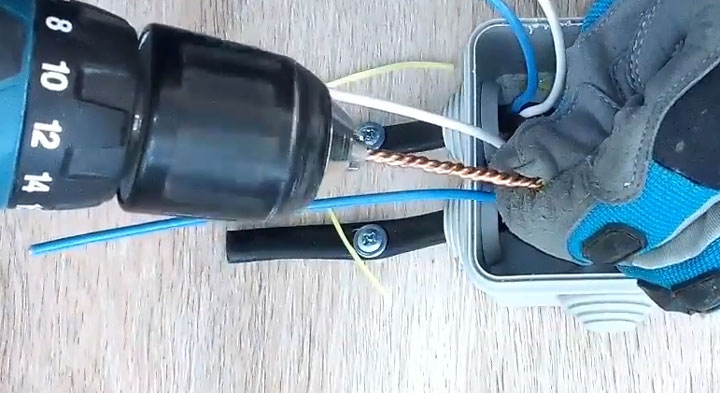
Then you cut the ends for evenness, and only then screw the clamp onto the twisted wires. 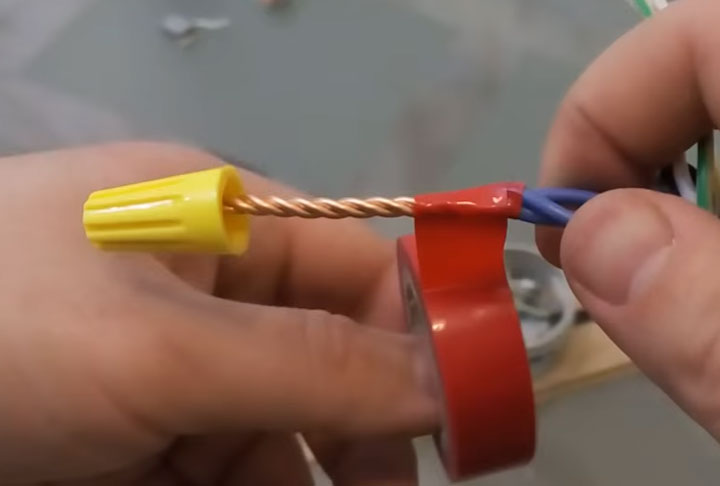
Which method to choose depends on the cross section of the connected conductors.
Just try to twist 4 GOST wires with a cross section of at least 2.5 mm2 with your hands and a cap. The load on the cap and the spiral will be such that if you do not carefully move it, you can break it.
But twisting two wires of 0.5 mm2 into PPE is not a big deal.
Stranding length
What should be the length of the twist? According to the manufacturers' recommendations, the twist should be equal to or slightly less than the length of the cap itself (10-12mm).
IEC data sheet for PPE caps -
Data sheet Navigator for PPE caps -
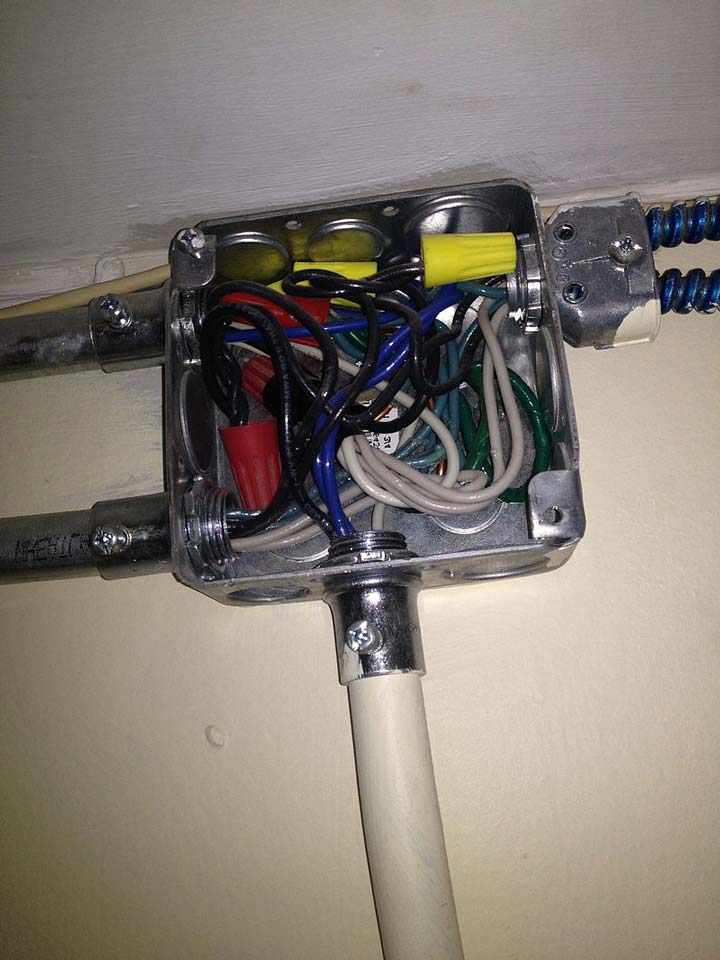 If you make it 3-4 cm long, at first glance this should not affect the quality of the connection and its resistance. However, there is one caveat here. Namely, the dependence on the number of twisted wires.
If you make it 3-4 cm long, at first glance this should not affect the quality of the connection and its resistance. However, there is one caveat here. Namely, the dependence on the number of twisted wires.
The more of them, the more desirable to increase the length of the twist.
If you twist five wires at the same time, to the depth of the PPE cap of only 1.5 cm, then you will never be able to create the same area of \u200b\u200bcontact of these wires, which is obtained with a twist length twice as long.
So approach the matter thoughtfully. The main thing after that is to securely insulate the remaining bare part of the wire. 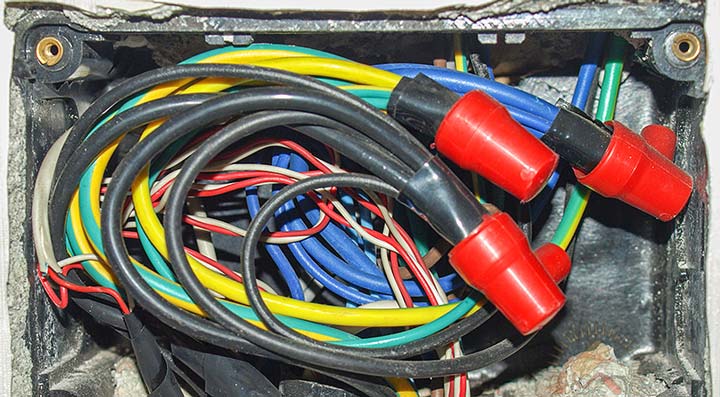
True, in this case, the connection is no longer correct to call PPE, since the cap itself no longer insulates the entire bare core.
In any case and at any length, this twist turns out to be quite reliable and, thanks to fixation with an insulated cap, the wires will no longer loosen during operation. After that, it can again be safely used on other equipment or an object.
Another common use of PPE is the legalization of twists in old junction boxes following the instructions of fire inspectors. 
The caps themselves are made of PVC compound, which does not spread combustion. And this is one of the conditions for fire safety requirements for electricians.
You open the box, remove the electrical tape from the old twist and wind a new cap over the cores. True, counterclockwise twists can come across, so be careful.
To disadvantages insulated caps PPE can be attributed to the fact that they are not suitable for stranded wires and are applicable only for monofilaments. 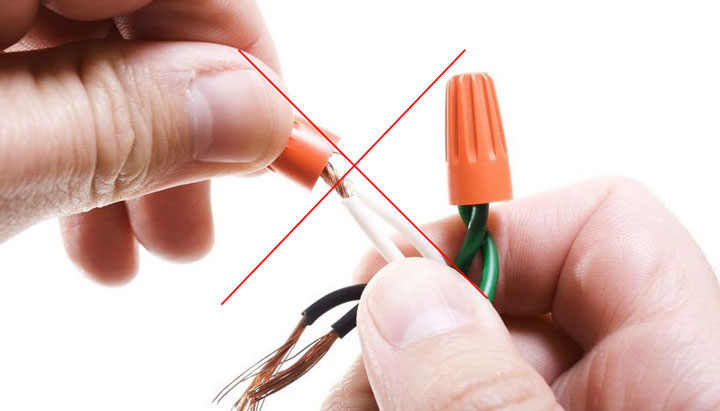
Also, manufacturers do not recommend twisting aluminum wires with them, indicating that this is primarily a clamp for copper.
Separate firms, as mentioned above, produce universal PPE clips designed for aluminum too. However, for the most part, their use for this particular metal is prohibited. 
And sometimes it can lead to the following consequences: ![]()
Domestic PPE also does not provide a tight connection. In a damp room, moisture can accumulate inside the cap, which gradually leads to rust and a violation of the compressive force of the spring.
To avoid this, you can insulate both the wires and the PPE cap itself with electrical tape. 
Another inconvenience of such clamps is their dimensions. If there are a lot of wires in the junction box, then the PPE will take up a lot of free space inside. Sometimes this can even force you to replace the box with another, larger one. 
In general, insulated PPE caps are chosen primarily for their cost-effectiveness and ease of installation. If you need a more reliable and durable connection, then invite professional electricians with all the necessary equipment.
And here is a curious test of the PPE cap for mechanical stress. The guy collected the wires in PPE and hung a punching bag for him, thereby checking how mechanically reliable this contact can be:
Related Articles

It is carried out by twisting, it is necessary to make a reliable and strong contact of the surfaces of the conductors, for better electrical contact. This can be achieved due to the effort that is applied during twisting, however, this type of connection loses its strength over time due to metal fatigue, as well as as a result of thermal expansion and contraction. But according to the PUE, it is forbidden to use twisting. This method is possible only in conjunction with special connecting insulating clamps (PPE). In this article, we will look at how to use PPE caps, what sizes of products are available, and what are the advantages of these connectors.
Cap design
The design of the device includes such components: a cap and a steel spring. The PPE cap is made of plastic, which has electrical insulating properties. Such plastic is non-combustible and resistant to high temperatures, and is also able to withstand a voltage of 600 volts. These indicators are usually written on the packaging.
As for the spring, it is made of steel in the form of a cone and, with the help of turns, compresses the wire more strongly. The steel spring is additionally treated with an electrochemical protective layer. The dimensions of the spring should be equal to the area of the smallest part of the body where the wire will make maximum contact with another conductor. Therefore, it is extremely important to choose the exact dimensions so that the connection is as correct and reliable as possible.
Application rules
There are two methods of twisting with the help of PPE caps: without preliminary twisting of the cores and with it. If it is necessary to connect two conductors, they can be conveniently inserted into the spring, applying a certain force, and using rotational movements(clockwise) twisting is carried out. If there are three or more conductors, then here you first need to twist them together using pliers. After that, bite off the uneven ends and, using force and rotational movements, install them in PPE, as shown in the photo:
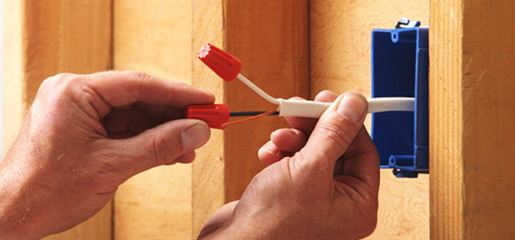
It is important to remember that for full contact contact, winding should be done clockwise, not vice versa. And do not forget about the use of force so that the coils of the spring move apart easily, and then squeeze the wire well.
The plastic housing isolates the place where the connection was made and thus mechanically protects the wires. Remove the insulation from the conductor, taking into account that the bare part does not extend beyond the cap, but at the same time goes under the spring as much as possible. If everything is done correctly, then additional insulation is not needed.
When winding the PPE on the twist, the spring expands and compresses the wire. Such a connection will pass correctly if the correct cap is selected, corresponding to its rating. If you choose the wrong device or ineptly install it, then this can lead to bad consequences. Therefore, it is extremely important to choose the right category.
The video below clearly shows how to use the connecting insulating clamps:
Connector markings
How to choose a cap? After all, the sizes and sections of the twist are different for them and are classified according to the total cross-sectional area of \u200b\u200bthe cores. This area is indicated in the connector number and can be from one to five. The larger the number, the more wires the cap is able to connect.
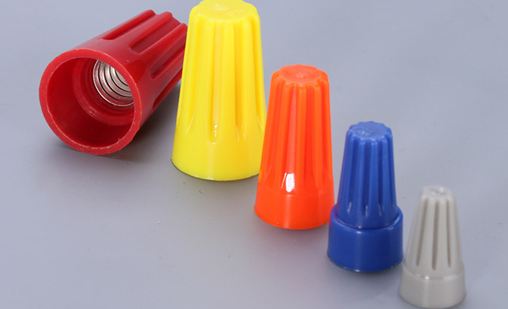
But with such figures you need to be careful, since there are two types of devices: domestic and European. The designation for both standards is the same - numbers, only European denominations are much smaller than domestic ones. Therefore, when buying PPE, it is better to pay attention to the total cross section than to its number. All this is written on the packaging.
It should also be remembered that caps can only be used when two identical wires are connected. If you want to connect wires made of aluminum and copper, then it is no longer possible to do this using PPE. In this case, you can use or a metal clip.
Product marking is carried out as follows: first, the PPE abbreviation is written, then the type of case is marked (with or without protrusions). The protrusion is necessary for better fixation with the fingers of the clamp. After the type of housing, the total cross section of the wires is prescribed, which are connected in the clamp. The cross section ranges from 0.5 to 10 mm2. As a rule, depending on the type and size of the product, their bodies are painted in a certain color to make it convenient to use the caps. The table below shows the color scheme depending on the type of housing, so it will become clearer for you how to choose PPE for twisting:

Advantages and disadvantages
Such a connector is convenient and practical, therefore it has the following advantages:
- Affordable price.
- There is no possibility of spontaneous combustion of electrical wiring. This is due to the fact that non-combustible material is used for the manufacture of PPE, and spontaneous combustion is impossible where the twisting was carried out.
- Quick and easy product installation.
- Caps have a huge selection colors. Therefore, if the wire is not indicated by color, then it can be marked using such a cap. For example, mark phase and zero with standard colors.
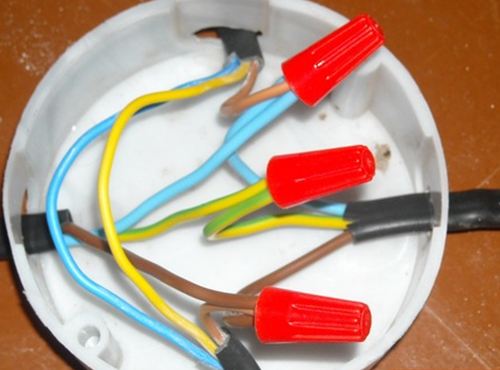
But PPE also has some disadvantages:
- it is not possible to connect aluminum and copper;
- insufficiently strong fixation and isolation.
Summing up and weighing all the pros and cons, I would like to note that it is rational to use PPE connecting insulating clamps when connecting current-carrying conductors in junction box, as well as when connecting fixtures (for example, chandeliers on the ceiling). Finally, we recommend watching a useful video
All wire connections must be properly insulated. First of all, the safety of a person, the reliability of contact, the absence of current leakage to the ground and the exclusion of short circuit. Several twists (connections) are laid in one junction box and contact cannot be allowed between them. Also, the insulation of wire connections protects against the appearance of traces of oxidation and corrosion on the surface of metals. There are several ways to insulate wires, which we will discuss below.
How to insulate wires?
This can be done with:
- heat shrink tube;
- ordinary PVC electrical tape;
- insulated terminals.
1. Insulation of wire connections with heat shrink tubing.
Today, heat shrink tubing can be purchased at any radio and electrical store and has become very popular lately. It is produced in different diameters, non-toxic, does not support combustion, its operation mode is from -55 0 С to +105 0 С and operating voltage is up to 1 kV.
Here you will need an industrial hair dryer to seat the tube on the cores. However, it is expensive and many people cannot afford it at home. Therefore, they get out of this situation with the help of a lighter.
When connecting wires, it is often necessary to put on a heat-shrinkable tube in advance. Remember this, otherwise you will have to disassemble the connection.
We cut off the tube with a margin so that the free sections protrude from both sides of the bare part of the wire by at least one centimeter.
We put on a heat-shrinkable tube on a twist. The photo shows that it is intended for use in a network voltage up to 600 V and at temperatures up to 125 0 С.
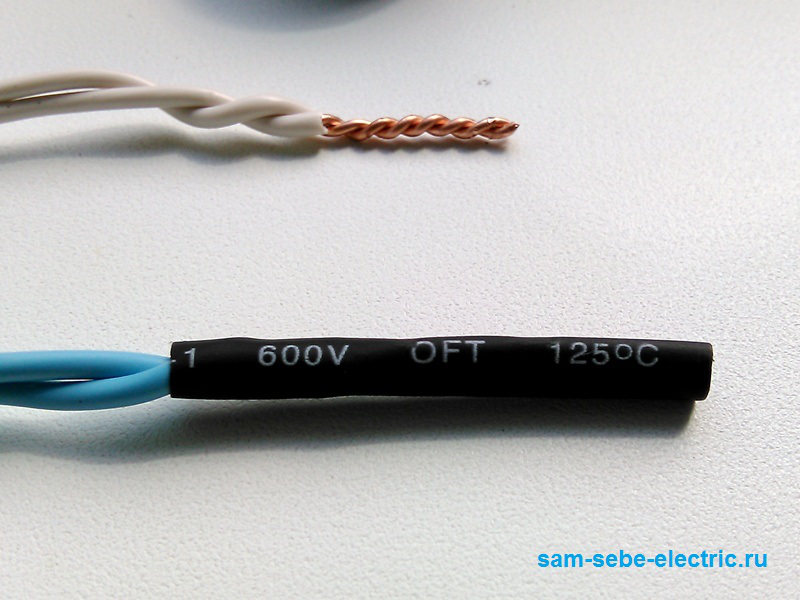
With the help of a hair dryer or a lighter, we seat in place. That's all - it's fast, reliable and inexpensive.
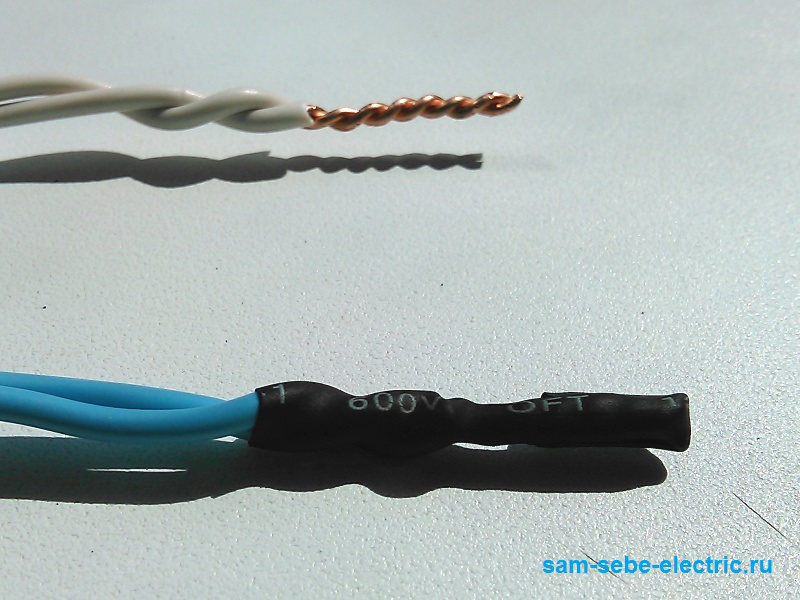
2. Insulate wire connections with ordinary PVC electrical tape.
Insulating tape is perhaps the most common material that is used in the insulation of twists and other connections. It is available and often inexpensive.
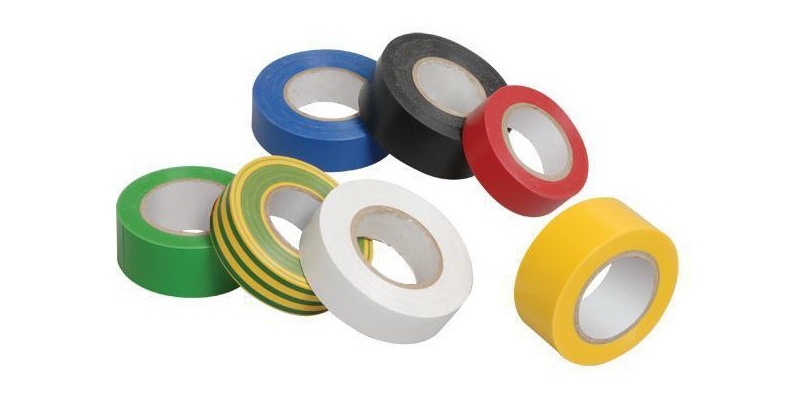
It is worth noting that any electrical tape is not suitable for reliable insulation of wires. Most duct tape sold is only suitable for winding a shovel handle or stick, not for electrics.
If your twists are in a junction box that will be plastered, then spend the extra $100-200 on a good quality and reliable duct tape like 3M™ Scotch. One skein should be enough for you. This will allow you to get reliable wire insulation and avoid various emergencies.
How do I insulate wires with electrical tape:
I start winding from standard insulation, I lived a little at an angle so that the winding moves towards the end of the twist ...
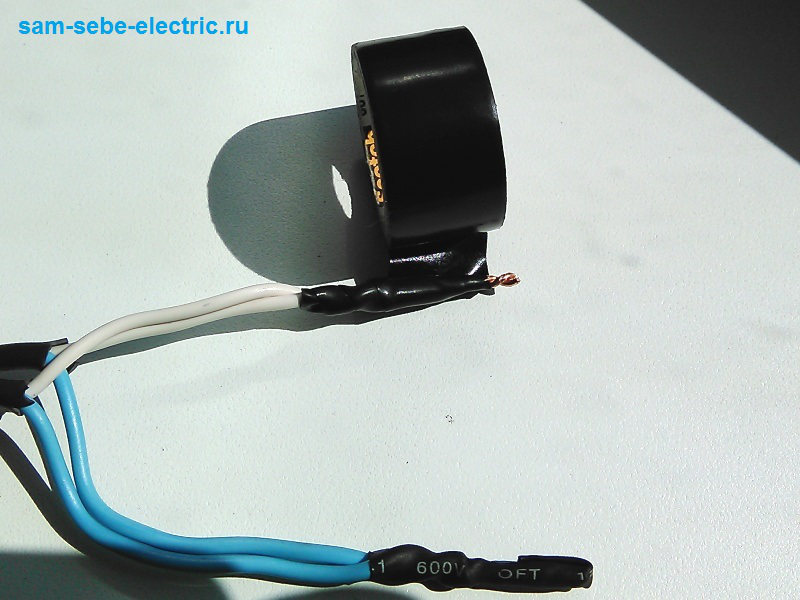
I continue to wind until I go beyond the twist and you get an empty tube with a length equal to the width of the insulating tape ...
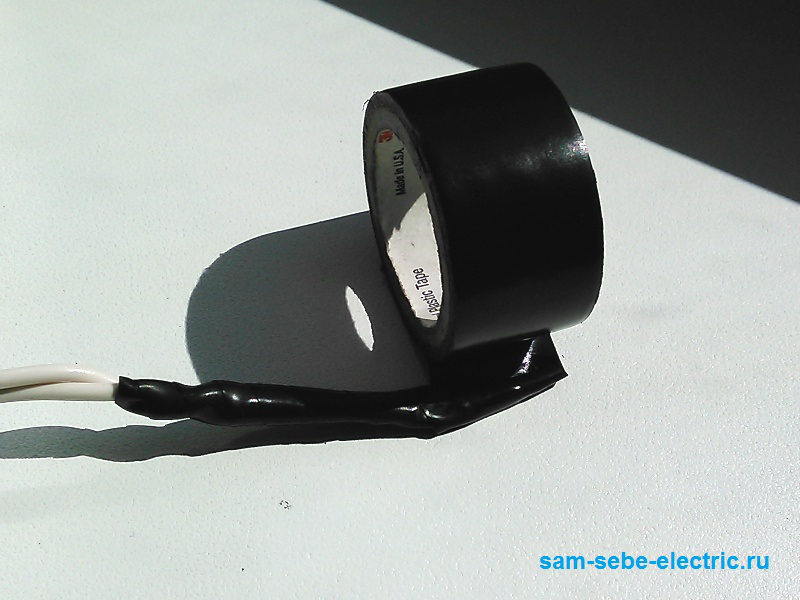
Then I bend this empty section of the twisted electrical tape and lay it along the twist in the opposite direction. Then I continue to wind the electrical tape at an angle, but already in the direction of the standard wire insulation ...

At the final stage, I cut off the excess insulating tape. This method of winding lasts a long time and there are no problems with the appearance of the bare very tip of the twist.
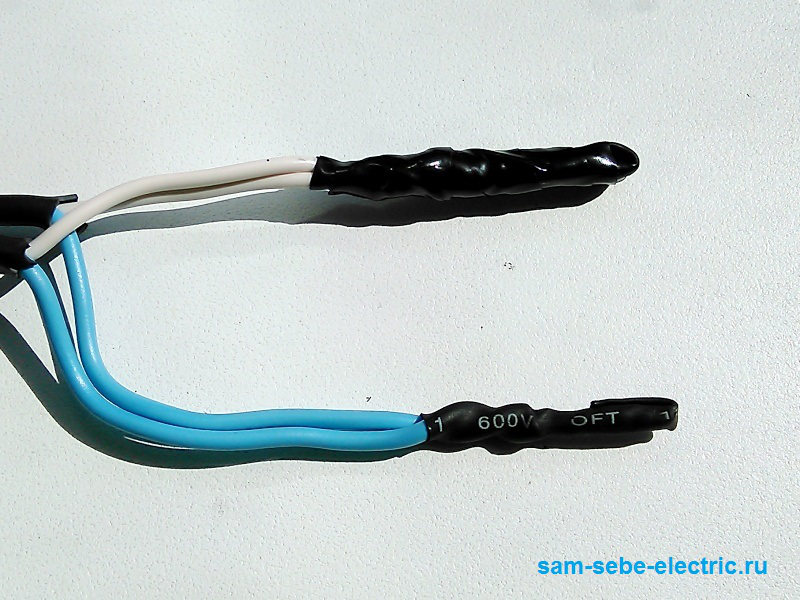
3. Insulate wire connections with insulated terminals.
This insulation option involves the use of different connecting terminal blocks that have a dielectric housing. These are ZVI screw clamps, PPE connecting insulating clamps, Vago universal self-clamping clamps.
If you make wire connections in the junction box using these materials, then you do not have to additionally insulate the junction. All listed terminals are already well insulated.
![]()
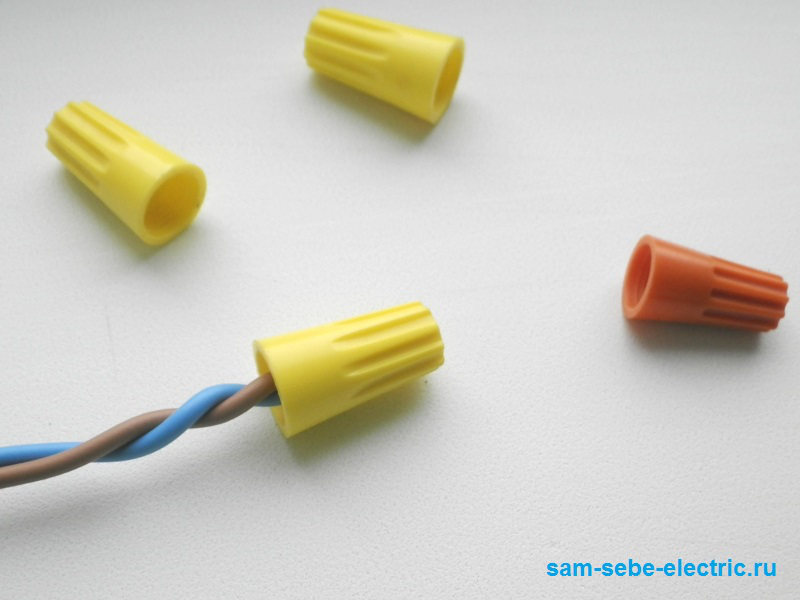

Above, we broke down how and how to insulate the wires. And what are you doing?
Let's smile:
Worker:
- I have thoroughly studied this lathe, this cutter and an electric grinder. Now I know them like the back of my hand.





